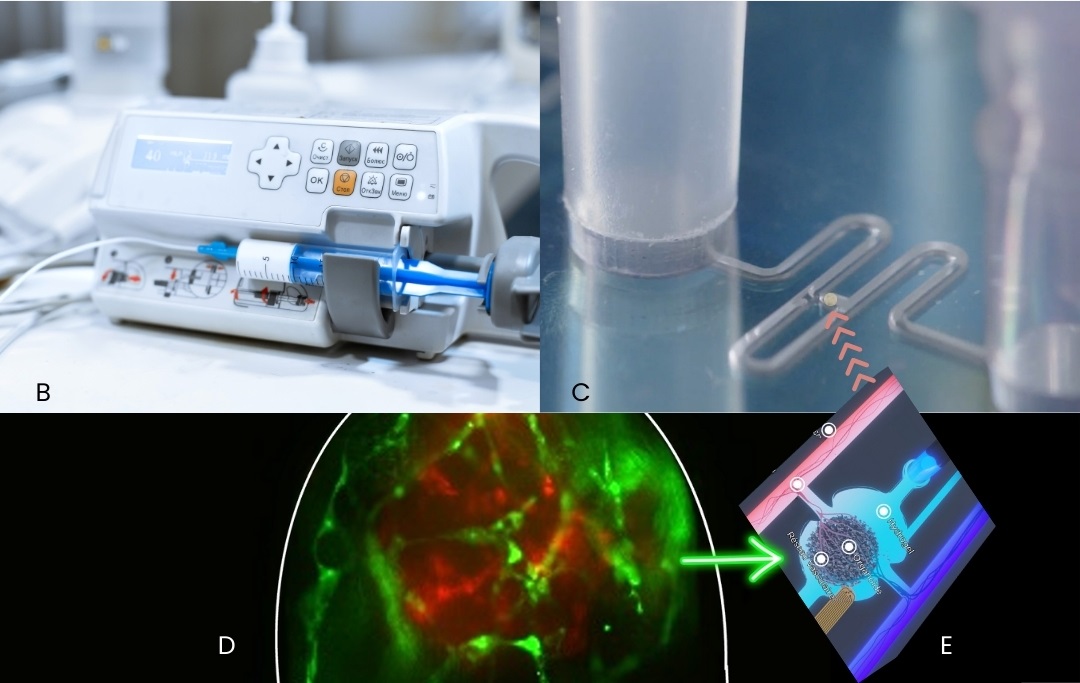The PEPR MED-OOC for Priority Research and Equipment Programme supports R&D on organs and organoids on chip (OoC). It highlights the strong potential for innovation in the fields of personalised medicine, public health, pharmacological research and clinical trials.
Emerging over the last ten years or so, organoids are new biological models that reproduce in the laboratory the human model, thereby overcoming the limitations of current models, particularly animal models. These are miniaturised devices containing in vitro cell cultures that mimic the physiological and pathological mechanisms and functions of living organs and tissues.
"The best model for a patient is their own cells! By culturing them on a microfluidic chip, they become an organ model that can be used by a doctor, for example to test drugs and propose the most appropriate therapeutic approach for the patient" explains Xavier Gidrol, researcher at CEA-IRIG and co-director of the PEPR MED-OOC.

Images: (B) emulating vascularisation; (C) microfluidic channel; (D) fluorescence image of vascular network ; (E) localised implantation scheme in the microfluidic chip. Credit CEA
The aim of this PEPR is to develop research into optimised, personalised care for each patient. The CEA, CNRS and Inserm are joining forces to structure the national community in this field, in collaboration with the universities of Paris sciences & lettres, Grenoble-Alpes, Compiegne and Toulouse III. This will contribute to the development of a national industrial sector, in close collaboration with the new Strategic Contract for the "Industries et Technologies de Sante" (CSF-ITS).